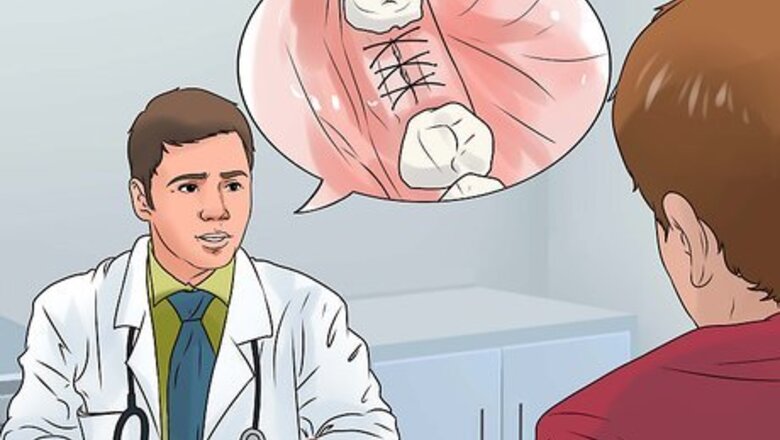
views
X
Trustworthy Source
Mayo Clinic
Educational website from one of the world's leading hospitals
Go to source
Most surgeons will use stitches to close these holes; however, in some cases stitches aren't used, and in these cases you can expect certain complications. In most cases, rinsing out your mouth with warm salt water (saline) solution does the trick. If that doesn't work, use a syringe to aim the saline directly into the socket and flush the food particles out. Learning how to properly clean and care for gum wounds can help prevent infection and complications during the healing process.
Caring for Your Wound Immediately After Surgery
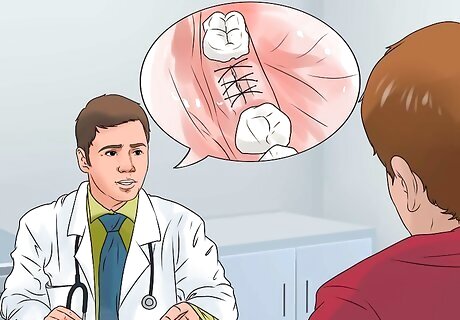
Ask your surgeon whether sutures were used. If your surgeon closed the wounds with stitches, food won't be able to get in the holes. You may see particles near the extraction sites that look grey, black, blue, green, or yellow. This is normal discoloration and is part of the healing process.
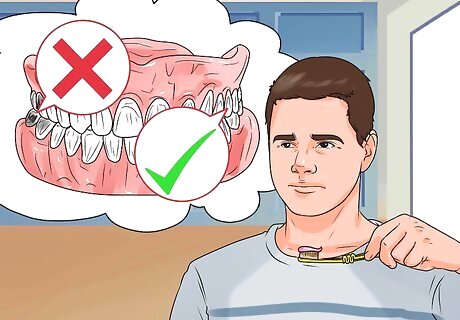
Avoid contact with the wound for the remainder of the day. Thoroughly brush and floss the rest of your mouth, but avoid the teeth closest to the wound.
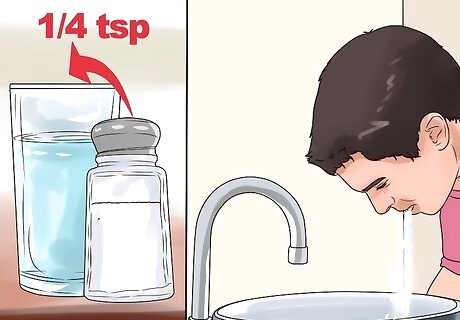
Rinse very gently with saltwater for the first 48 hours. It's okay to rinse the first day, but you have to take certain precautions. Combine 1/4 teaspoon salt with one cup of warm water. Stir it well to mix. Avoid swishing the saltwater rinse in your mouth or spitting it out. Gently move your head to move the rinse around your mouth or use your tongue to help move the saline solution around. After rinsing, lean over the sink and open your mouth to let the rinse fall out. Don't spit. Your doctor may also give you chlorhexidine gluconate (Peridex, Periogard) to rinse with. This is a germicidal mouthwash that helps kill bacteria. Try diluting it with water at a 1:1 ratio to avoid any possible negative effects of the chlorhexidine.
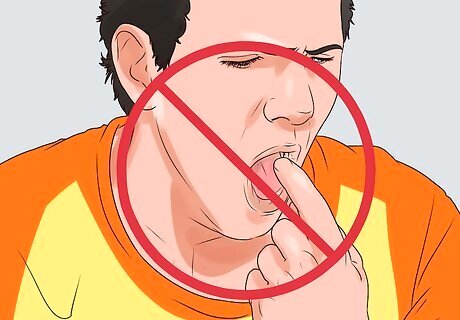
Do not use fingers or any foreign objects to remove food. Don't use your tongue to prod the hole, either. Doing this may introduce bacteria to the wound, and could disrupt the healing tissue. Instead, stick to salt water rinses to remove food particles. Avoid brushing the area where the tooth was removed for at least 8 hours.
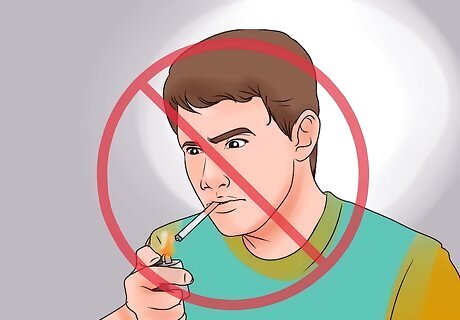
Avoid smoking and using straws. Any kind of suction activity in the mouth could dislodge blood clots, causing a painful dry socket and potentially leading to infection.
Rinsing After the First Day
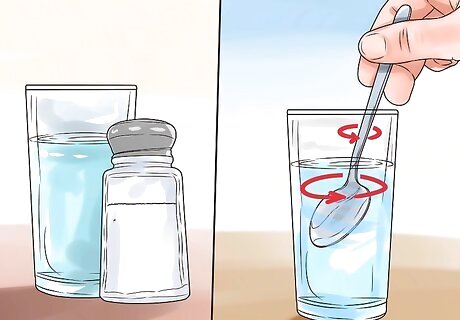
Make a salt water rinse. Salt water rinses are useful for cleaning wounds in the mouth, removing food, and reducing pain and inflammation. Mix 1/4 teaspoon salt in eight ounces of water. Stir completely, so that the salt is well-dissolved in the water.
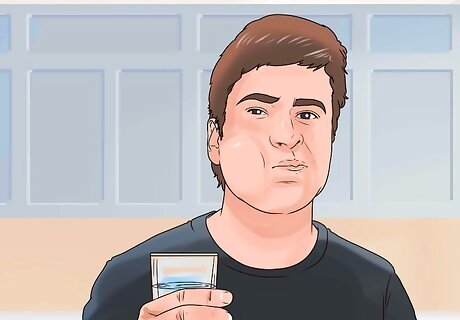
Rinse gently using the salt water rinse, until the solution is completely used. You may wish to focus your rinsing action on the affected side of your mouth, to most effectively remove debris and provide inflammation relief. Even if you feel like something is caught in your mouth, avoid swishing water very forcefully, as it can disturb the healing process. It's crucial to keep the blood clot in place for your gums and bone to heal again, and when you put a lot of pressure in your mouth from swishing and spitting, it can disrupt the blood clot.
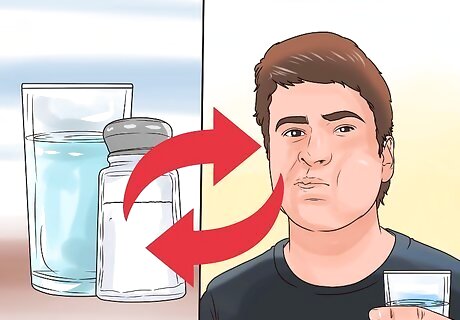
Repeat the rinse procedure every two hours and after every meal. You'll also want to rinse thoroughly before you go to sleep. Doing this will reduce inflammation and help ensure that your wound is kept clean and can heal properly.
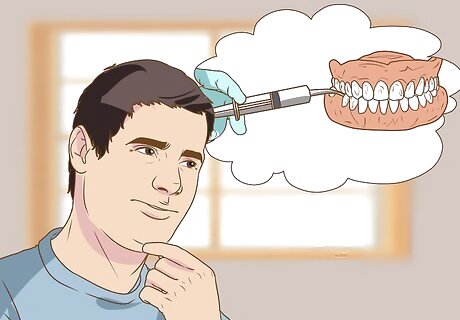
Use a syringe if directed. Using a syringe may help you control the flow of water and allow you to clean your wound more efficiently; however, if not used properly, an irrigator or syringe can dislodge the blood clot forming to heal the tissue. Ask your dentist whether you should use one. Fill the syringe with lukewarm water. You may also use the saltwater solution described above. Aim the tip of the syringe as close as possible to the site of your wound without actually touching it. Flush the site of the wound from any necessary angles to thoroughly clean the wound and prevent infection. Do not push too forcefully — expelling a powerful jet of water directly into the socket could be harmful.
Knowing What to Expect After the First Day
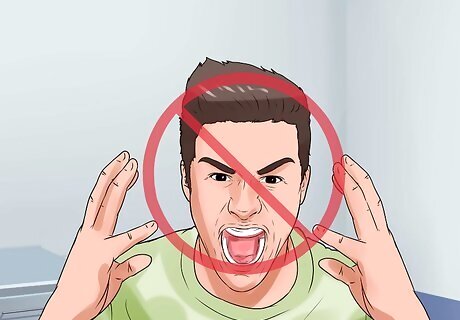
Don't panic. Food that gets caught in a wisdom teeth wound may be uncomfortable, but it alone should not cause an infection. Healing can still take place even if food gets caught, and it's more important to avoid touching or probing the wound.
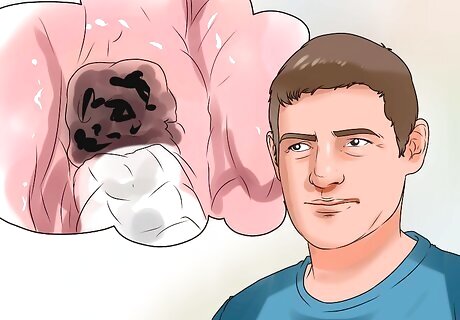
Don't confuse a clot with food. Clots in the gums may appear gray and fibrous, like food particles. Cleaning too vigorously in this case may remove the clot and cause further complications.
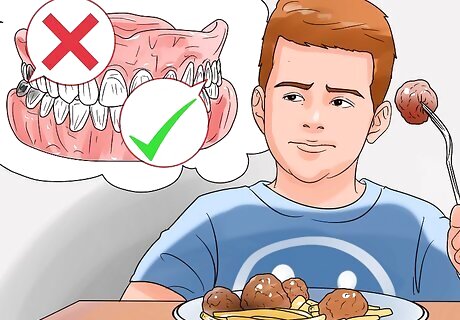
Stick to soft foods. This is especially important during the first 24 hours after surgery. Gradually move from soft foods to semi-soft foods as your wound heals. It's generally best to avoid hard, chewy, or crunchy foods, like chips. These are most prone to pooling in the socket and causing irritation or infection. Opt for softer foods like pasta and soup, but keep in mind that small foods, like rice, can get caught in the hole from the extraction, which can irritate your gums. Chew on the opposite side or your mouth from the extraction site. Avoid eating foods that are too hot or cold foods. Go for room temperature foods during the first two days.
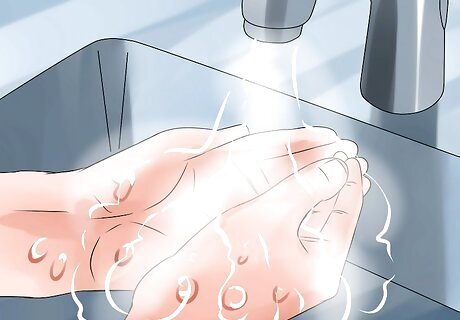
Avoid sources of contamination. Wash your hands frequently with soap and water. Don't shake hands with people for a week or so. Don't share toothbrushes or other implements with others. You want to make sure that you don't pick up a secondary infection that could tax your immune system.
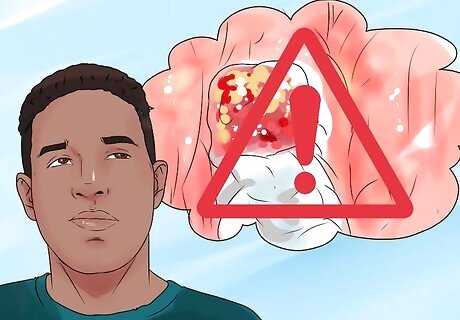
Know when to seek professional help. Some bleeding will be common over the first few days following a tooth extraction. If you experience any of the following symptoms, however, you should contact your dentist or oral surgeon immediately. Excessive bleeding (more than a slow ooze) Pus in the wound Difficulty swallowing/breathing Fever Swelling that increases after two or three days Blood or pus in nasal mucus Throbbing, dull pain after the first 48 hours Bad breath after three days Pain that is not reduced after taking painkillers















Comments
0 comment